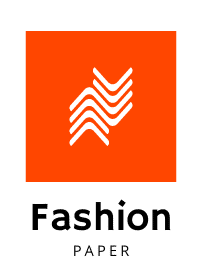
How to set up a secure cloud-based collaboration platform for remote teams?
In recent years, the shift toward remote work has been exponential. Companies worldwide have embraced the flexibility and efficiency of allowing team members to work from various locations. However, ensuring secure and effective collaboration remains a challenge. Today, we'll guide you through setting up a secure cloud-based collaboration platform for your remote teams, ensuring that all your data, files, and communications remain secure and accessible.
Understanding the Importance of a Cloud-Based Collaboration Platform
Before diving into the specifics, let's explore why a cloud-based collaboration platform is essential for remote teams. In the era of remote work, the need for a central place where team members can communicate, share files, and manage projects in real time is critical. This platform enables seamless interaction and collaboration, ensuring that everyone stays on the same page, no matter where they are located.
A voir aussi : How to develop a secure and scalable AI-driven platform for remote patient monitoring?
A cloud-based platform offers several advantages:
- Accessibility: Team members can access necessary documents and tools from anywhere, at any time.
- Real-Time Collaboration: Features like file sharing, project management, and communication tools allow for real-time updates and interactions.
- Security: With proper setup, your data remains secure from unauthorized access, breaches, and other potential threats.
Choosing the right tools and features is crucial for maximizing the benefits of a cloud-based platform. Let's delve into setting up your secure collaboration environment.
A découvrir également : What are the critical steps for developing a secure AI-powered recommendation system for e-commerce?
Choosing the Right Tools for Your Remote Team
Selecting the appropriate tools for your remote collaboration platform is the first step. The right tools will enable effective project management, communication, and secure file sharing. Here are some essential tools to consider:
- Project Management Tools: Tools like Asana, Trello, or Monday.com help your team manage tasks, deadlines, and project milestones. These platforms provide an overview of the project's progress, ensuring everyone is aligned.
- Communication Tools: Slack, Microsoft Teams, or Zoom facilitate smooth communication among team members. These tools offer chat, video conferencing, and integration with other productivity tools.
- File Sharing and Storage: Google Drive, Dropbox, or OneDrive are excellent for storing and sharing files securely. They offer robust security features, ensuring your data remains protected.
- Collaboration Tools: Tools like Miro and Figma allow for real-time collaboration on design projects, brainstorming sessions, and more. They enhance creativity and teamwork across remote distances.
When selecting these tools, consider the features that best align with your team's needs. For instance, if your team frequently works on graphic design projects, a tool like Figma could be invaluable. On the other hand, if your primary focus is project management, Asana or Trello might be more suitable.
Ensuring Security and Data Protection
Security is paramount when working with remote teams. Ensuring that your cloud-based platform is secure involves several steps:
- Data Encryption: Ensure that all data, both in transit and at rest, is encrypted. This prevents unauthorized access and keeps your information safe.
- Multi-Factor Authentication (MFA): Implement MFA to add an extra layer of security. This means that even if a password is compromised, unauthorized access is prevented.
- Access Controls: Set up role-based access controls to ensure that team members only have access to the data and tools they need. This minimizes the risk of accidental data breaches.
- Regular Security Audits: Conduct regular security audits to identify and address vulnerabilities. This proactive approach helps prevent potential issues before they become problematic.
- Secure File Sharing: Use platforms that offer secure file sharing options. Ensure that files are only shared with authorized users and that permissions are managed effectively.
By focusing on these security measures, you can protect your sensitive data and maintain the integrity of your collaboration platform.
Setting Up Effective Communication Channels
Effective communication is the backbone of successful remote collaboration. Without face-to-face interaction, remote teams rely heavily on digital communication tools. Here’s how to set up and maintain effective communication channels:
- Centralized Communication Hub: Choose a primary platform for communication, such as Slack or Microsoft Teams. This ensures that all team members know where to go for updates and discussions.
- Clear Communication Guidelines: Establish guidelines for communication, including response times, preferred channels for different types of messages (e.g., urgent vs. non-urgent), and etiquette. This helps prevent misunderstandings and ensures smooth interactions.
- Regular Check-Ins: Schedule regular check-ins, such as daily stand-ups or weekly meetings, to keep everyone aligned. Video calls can be particularly effective for maintaining personal connections and fostering team spirit.
- Document Everything: Encourage team members to document important discussions and decisions. This ensures that information is easily accessible and can be referred back to when needed.
- Supportive Communication Culture: Foster a culture of support and encouragement. Celebrate successes and show appreciation for contributions. This can boost morale and create a positive work environment.
By setting up effective communication channels, you can ensure that your remote team operates smoothly, stays connected, and feels supported.
Monitoring and Improving Collaboration
Once your cloud-based collaboration platform is set up, it’s essential to monitor its effectiveness and make improvements as needed. Here are some strategies to help you do this:
- Feedback Loops: Regularly solicit feedback from team members about the tools and processes in place. This insight can help you identify areas for improvement and make necessary adjustments.
- Performance Metrics: Track key performance indicators (KPIs) related to collaboration, such as task completion rates, communication response times, and project milestones. This data can provide valuable insights into how well your team is functioning.
- Training and Support: Provide ongoing training and support for your team members. This ensures that everyone is comfortable with the tools and knows how to use them effectively.
- Adapting to Changes: Be open to adapting your collaboration platform as your team’s needs evolve. This could involve integrating new tools, adjusting communication guidelines, or implementing additional security measures.
- Celebrating Success: Recognize and celebrate team achievements. This not only boosts morale but also reinforces positive behaviors and encourages continued collaboration.
By continuously monitoring and improving your collaboration platform, you can ensure that your team remains productive, engaged, and secure.
Setting up a secure cloud-based collaboration platform for remote teams involves careful planning and execution. By choosing the right tools, ensuring robust security measures, establishing effective communication channels, and continuously monitoring and improving your processes, you can create an environment that fosters collaboration, protects your data, and supports your team's success.
In the remote work landscape, a well-structured and secure collaboration platform is not just a luxury—it's a necessity. Embrace the right tools and strategies to ensure your remote team thrives, no matter where they are.
By following these guidelines, your team will be well-equipped to navigate the challenges of remote work and achieve their goals efficiently and securely. Celebrate your achievements, support your team, and embrace the future of work with confidence.
